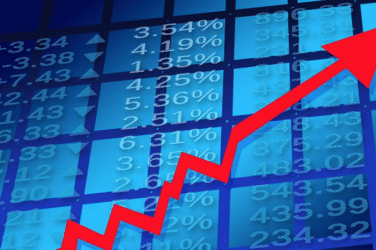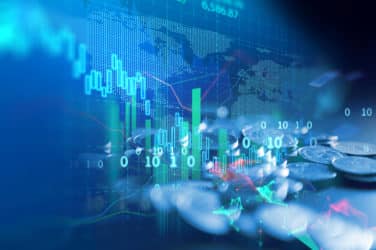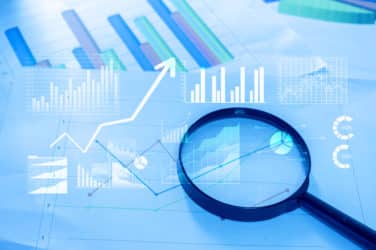Buy-side heads of equity trading got the chance to hear directly from US Securities and Investments Commission (SEC) on its equity market structure initiatives for 2020 on day two of the Equities Leaders Summit (ELS) 2019 in Miami, which was dominated by big-picture themes like fees for market data, the evolution of regulation, and how traders can capitalize on the steep growth of the $5.57 trillion exchange traded fund (ETF) and exchange traded product (ETP) industry.
Regulators speak
In a morning session Q&A, SEC Commissioner Robert J. Jackson Jr. said there was currently a “healthy back and forth” between the regulator and the industry, adding that he was proud that the SEC remains serious about “holding exchanges to account for pricing decisions” and the transparency of market data.
“For the first time in a long time, people are taking a step back and asking ‘How did we get here? Is this a competitive market structure?’ We at the SEC want to hear about how competitive forces could help this,” he said.
In a later Q&A session led by Capital Markets Strategies’ Ari Burstein, Brett Redfearn, Director of the SEC’s Trading and Markets Division, added that “we do need to look at the competitive forces at play, in light of other dynamics and to what extent we are seeing competition.”
Regulatory topics, such as the Order Protection Rule (OPR) and MiFID II, were also discussed by the SEC staffers during the Miami confab’s second day. When questioned by moderator Tyler Glellasch of the Healthy Markets Association as to whether the OPR remains necessary, Jackson said the question could not be considered “in a vacuum.”
“If you want to have a conversation about it, that’s fine, but then what are we going to do about best execution? If you want to consider that issue, then I’m open minded – happy to go down that road. But the two questions go hand in hand,” he said.
With regards to MiFID II, which is still proving to be a challenge for buy side firms with global operations, Jackson noted there were a lot of lessons learned from the experience.
“MiFID II is what happens when regulators lock themselves in a room, identify a problem and come up with a solution without gauging the wider market… What happened here was a big step that didn’t take into account where the market was,” he said.
“The SEC has an open-door policy on this subject… In the MiFID II space in particular, I’m very sensitive to making a decision without learning how the market is going to respond.”
Redfearn emphasized that the SEC was in frequent communication with European regulators.
“There is an active dialogue about the wording and effects of various actions the commission has taken, including on unbundling and actions that could affect smaller firms,” he said.
The market data landscape
This topic of market data and market access services and associated fees, as well as the emergence of new exchanges, was also touched upon in a panel that included MEMX CEO Jonathan Kellner and Amy Hong, Global Head of Market Structure at Goldman Sachs.
Kellner said the creation of MEMX, which is expected to launch later this year, was borne out of the desire to increase competition.
“There needs to be more competition in the equity exchange space. 96% of the on-exchange flow is controlled by three companies,” he said. He added it also drives innovation “because we are starting from scratch and using the latest and greatest technology.”
“We don’t think it [the system] is broken, but it does need more competition. The more we can leverage technology to make outcomes more deterministic, there will be better outcomes and more liquidity…everyone will benefit,” he said.
At the same time, Hong acknowledged that the current trading environment remains complex, noting that “it will be interesting to watch” the effect of the new services coming into the market.
“At the end of the day, the real challenge is in navigating how complex the paradigm currently is and getting people to incorporate new solutions into their day-to-day trading activity. I would like to see all new venues coming to market clearly explain their value proposition,” she said.
Rise of ETF trading
In a well-attended morning session, ELS delegates were asked to consider how the trading desk can best capitalize on the burgeoning ETF sector, which was a topic touched upon across a number of sessions throughout the course of the two-day event.
Panelists from both the buy and sell side discussed a range of opportunities that may come from the SEC’s recent approval of more non-transparent, actively managed ETFs. While most traditionally structured ETFs reveal their holdings every day, this flavor of ETF lets fund managers keep their holdings confidential.
Commenting on the trend, Clive Williams, Head of Global Equity Trading at T.Rowe Price, urged active managers to be more involved in the ETF market, which will ultimately open up the space.
“We want to compete and bring alpha to clients – the one big difference between ETFs and mutual funds is that we don’t want to give daily holdings because that is our secret sauce. The next three to five years will be a game-changer for the active managers because you can compete…you can add alpha,” he said.
On the same panel, Rob Forsyth, head of SPDR America ETF Strategy at State Street, agreed, saying “the industry would see a “proliferation of products throughout 2020.”
“The rule passed this year allows asset managers to get involved with this space even more quickly… That proliferation does muddy the waters, but it also helps the tradeability and liquidity profile of these ETFs,” he said.
However, Forsyth cautioned that there were many factors to consider when deciding on a particular ETF to invest in.
“The evaluation of those products is critical. There are so many to choose from, and much of the decision will boil down to your priorities: liquidity, asset diversification, etc,” he said.
Click here to read the recap of Day One of ELS 2019.
Produced in association with Forefront Communications.






